경기문화재단
Suwon_Rampart Tour
Ideal place for a leisurely walk
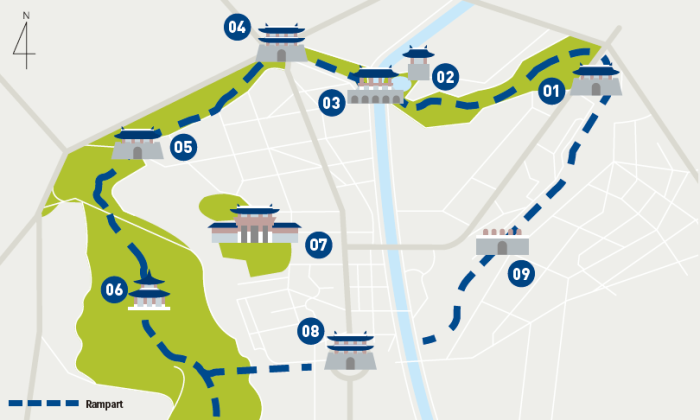
Unlike Namhansanseong Fortress or Haengjusanseong Fortress, Hwaseong Fortress was constructed on flatland. The ramparts span 5.7 kilometers in total, and you can tour the entire fortress in half a day even at a slow pace. Except for some sections including the one from Hwaseomun Gate to Seojangdae Command Post, most sections are generally flat and good for walking. Even though the fortress is situated in the middle of the city, you do not need to cross a road except in front of Paldalmun Gate. Since there are viaducts for the sections where the ramparts are disconnected due to driveways, you can take a tour of the entire fortress walking on the ramparts.
If you want to explore the fortress more comfortably, you can take the Hwaseong Fortress Tourist Trolley. Velo Taxis using electric bicycles are also available.
1. Changnyongmun Gate
The eastern gate of Hwaseong Fortress. Here you can fly in a hot air balloon. In the large courtyard within the ramparts of Changnyongmun Gate, martial arts, horseback riding and traditional archery performances are held during the festival. You can also fly a kite here.
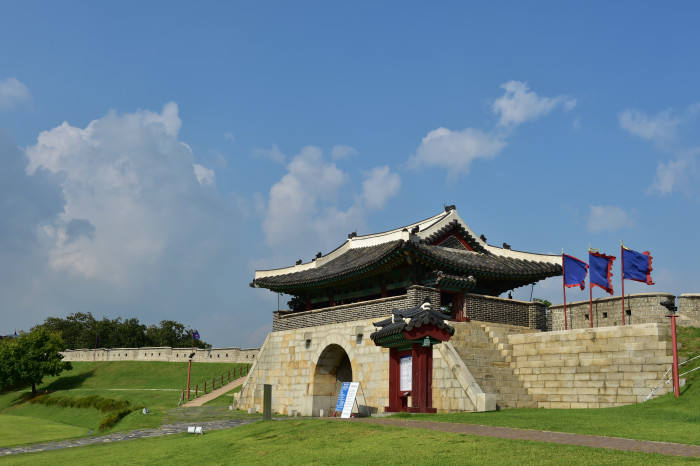
2. Banghwa Suryujeong Pavilion and Yongyeon Pond
This pavilion is also called "Dongbukgangnu" or "Yongdugak." It boasts one of the most spectacular views at Hwaseong Fortress. You enter this pavilion after taking off your shoes. In summer, various performances are offered at Yongyeon Pond against a backdrop of Banghwa Suryujeong, which was designated as Treasure No. 1709.
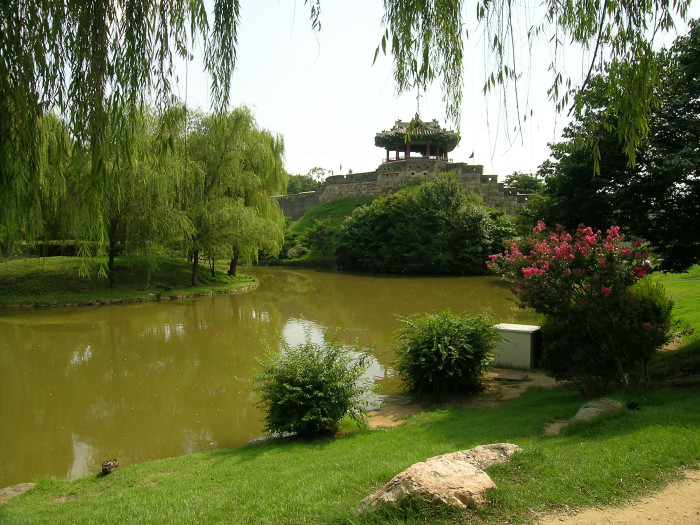
3. Hwahongmun Gate
As this gate has seven sluices, its name includes the Chinese character "hong," which stands for "rainbow." It is also called "Buksumun" which means "the northern gate" for it is located to the north of the fortress. You can enter the pavilion at the gate after taking off your shoes. The pavilion overlooks the Suwon Stream to the south, and Yongyeon Pond to the north. It is a good place to relax during your rampart tour.
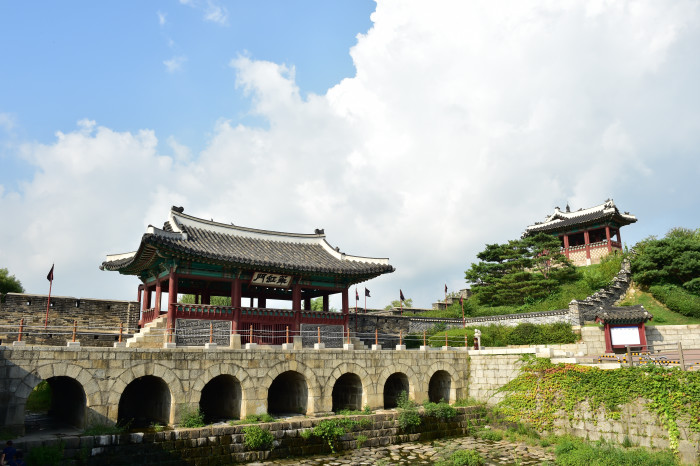
4. Janganmun Gate
When you reach Janganmun Gate, it is recommended to step down from the ramparts for a little while. There is a park on the west side of this gate where you can observe the shape of the ramparts while walking along the trail of this park. In this section, the ramparts are especially in a good state.
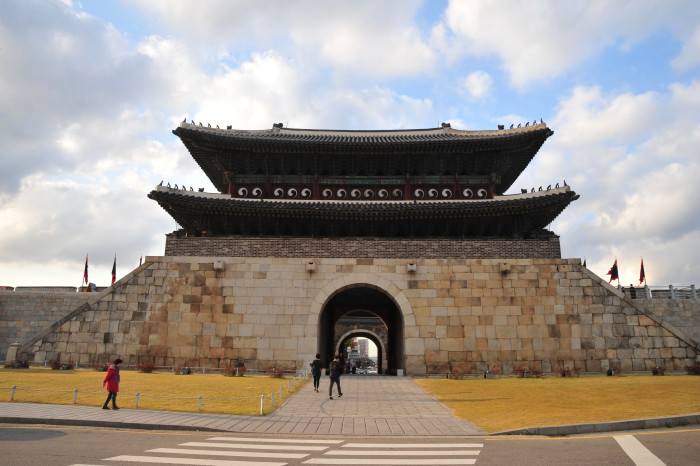
5. Hwaseomun Gate
The gate is smaller to the others. Hwaseomun Gate and Seojangdae Command Post are connected by a quite steep forest path. The gate is designated as Treasure No. 403.
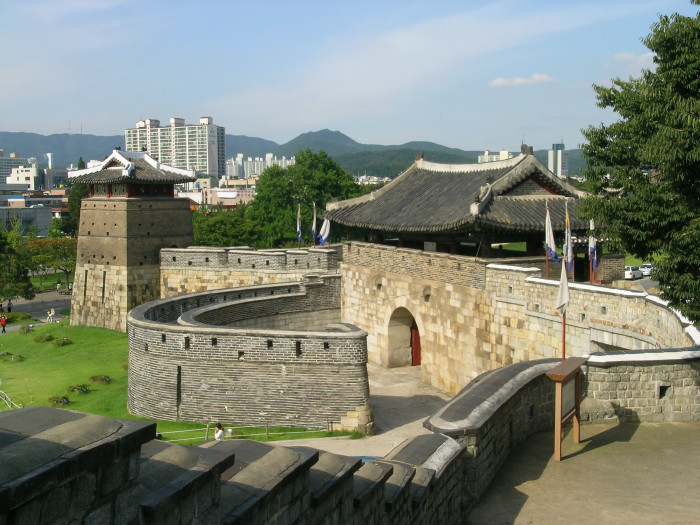
6. Seojangdae Command Post
On the summit of Paldalsan Mountain is Seojangdae Command Post, from which you can see the entire fortress at a glance. Next to it sits Hyowon Bell, which was installed in 1991 in commemoration of King Jeongjo's filial devotion to his father.

7. Temporary Palace at Hwaseong Fortress
Most of the structures were destroyed or lost during the Japanese colonial period except Nangnamheon Hall. But the palace has recovered its original state in recent decades. Various cultural experience programs are provided on weekends, and the performance "24 Kinds of Martial Arts" is held in front of Sinpungnu, which is the main gate of the palace.
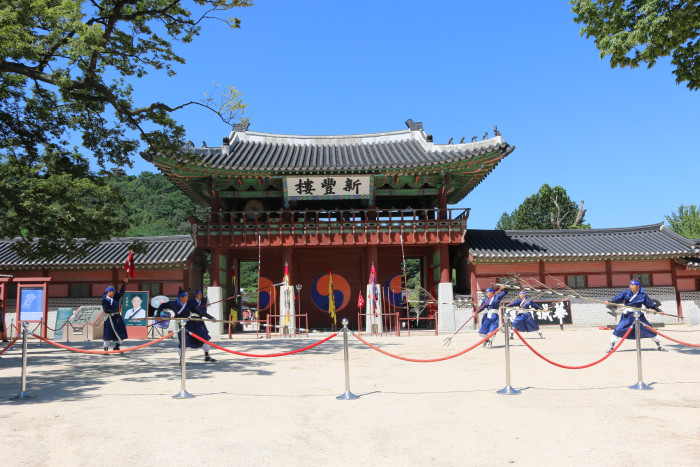
8. Paldalmun Gate
This is the southern gate of the fortress named after the expression "satongpaldal" which means "connected to all directions." It was designated as Treasure No. 402.
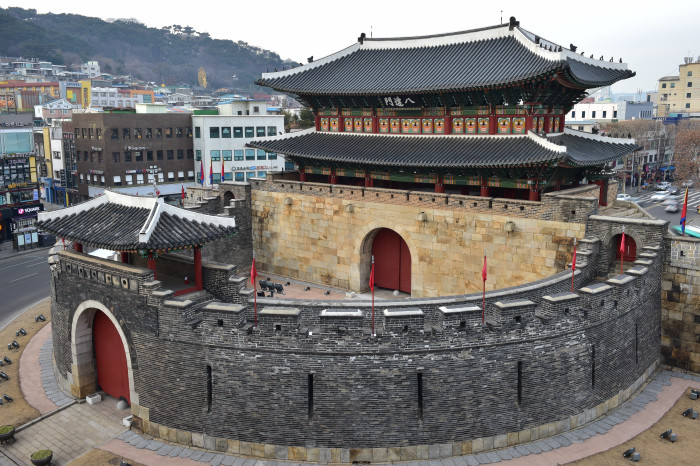
9. Beacon Tower
Built with densely piled up bricks, the tower is in harmony with the surroundings as part of the ramparts.

<ggc의 모든 콘텐츠는 저작권법의 보호를 받습니다.>